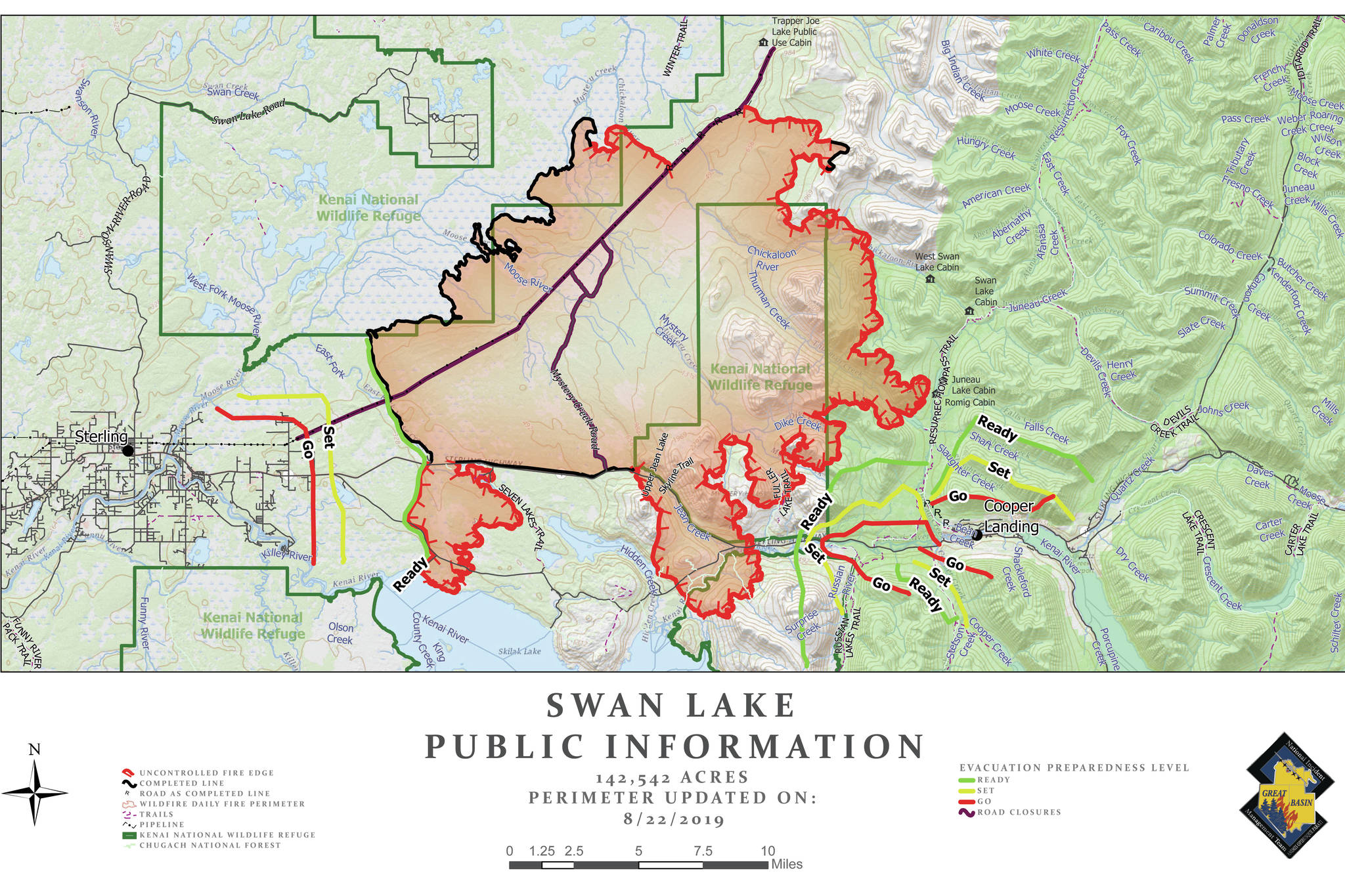The Great Basin Incident Management Team reported clear air in Cooper Landing Thursday afternoon, which gave residents a break from the heavy smoke conditions and allowed aviation resources to be used in suppression efforts for the Swan Lake Fire.
The Sterling Highway didn’t experience any closures on Thursday, which is a change of pace from recent days. Most of the closures have been a result of heavy smoke conditions that impair visibility, especially when the smoke mixes with early morning fog. Highway conditions are still subject to change, and the latest information can be found at kpboem.com or 511.alaska.gov.
Helicopters spent Thursday dropping water on an area south of the Kenai River and west of Cooper Landing, according to the latest update from the incident management team. Public Information Officer Michael Davis said on Thursday that this area has been difficult to reach for crews on the ground due to recent flooding.
“All of the commercial fisherman are pulling their tours out of there, and they’re the experts around here so we’ve been following their lead,” Davis said.
Crews successfully crossed the river Thursday and begin establishing control lines in that area that will prevent the fire’s spread to the east on the south side of the river.
The control line on the western perimeter of the fire has been completed from the Sterling Highway south to Skilak Lake, and Davis said that crews are now bringing in miles of fire hose to “plumb” that line. Plumbing the line creates a junction every 50 to 100 feet that will allow firefighters to spray water anywhere up and down the line and defend it from fire growth.
Davis said that that wind has started to push to the west and will test this completed line. Meanwhile, the control line that was established weeks ago on the north side of the highway has been holding, and the latest monitoring has not shown any growth in that area.
Davis said that the incident management is not lacking for resources, personnel or equipment due to the high priority of the Swan Lake Fire.
“Basically the only fire activity in the U.S. is here in Alaska, and this is the number one fire in the nation, so we’re able to pull any resources we need from the Lower 48,” Davis said. Davis said that the incident management team has been conscious of the taxpayer money used to manage the fire. So far Swan Lake Fire operations have cost about $25.4 million, according to data from the National Interagency Coordination Center Incident Management Situation Report.
Because no big wind events are forecasted for the area, Davis said that the management team is confident that crews on the ground will be able to establish control lines without significant growth. The latest infrared mapping puts the fire at 142,542 acres.
Davis is from Colorado and has been a public information officer for nearly a decade as well as an EMT and firefighter in his hometown of Hotchkiss. Davis said that what makes managing the Swan Lake Fire unique is the number of high priority targets that require protection, such as the communities of Sterling and Cooper Landing, the Enstar gas line, the Moose research center and public use cabins in the area.
“Every square inch is worth fighting for,” Davis said.

